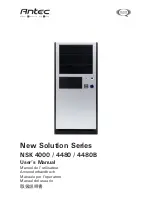
MIO-R45XRFR4836 Rev E
G&B Specialties Inc. 535 West 3
rd
Street, Berwick, PA, USA Tel: (570) 752-5901 Fax: (570) 752-6397
US Field Service: 570-441-6988; CAN Field Service 570-854-0482; www.rafna.com
-19-
R
AILGEAR
A
LIGNMENT
The railgear must be correctly aligned to perform properly, safely, and avoid excessive wear
and derailment. The rail wheels can be independently aligned for toe-in/toe-out and the
railgear can be adjusted side to side (laterally) on the vehicle. A parallel line system and the
following procedure should be used to perform the railgear alignment.
The rail wheel loads should be checked and adjusted, the vehicle should have had a
four-wheel alignment (with the complete railgear package installed on the vehicle and any
suspension modifications done) and the tires should be properly inflated prior to performing
the railgear alignment.
The railgear alignment is done with the vehicle on a straight and level section of rail with the
railgear in the rail position and the vehicle wheels pointing straight ahead. The individual rail
wheel alignment should be done first, followed by the lateral alignment of the railgear.
Each rail wheel is aligned by loosening the four 1/2” fasteners that secure it to the railgear
axle. The rail wheel is then turned into alignment. The four 1/2” fasteners should then be
tightened and torqued to 100 ft-lbs dry. Do not over torque.
The railgear is aligned laterally by loosening the eight 5/8” fasteners that secure it to the
railgear mounting boxes. The railgear is then moved sideways into alignment. It may be
necessary to raise the railgear off the rails to move the railgear side to side. Do not use any
force against the railgear guide tubes as this may damage them and restrict suspension
movement. The eight 5/8” fasteners should then be tightened and torqued to 150 ft-lbs dry.
Do not over torque.
Refer to Figure 5 for alignment measurement and specifications. Use an 18” magnetic straight
edge on the back of each rail wheel to measure from.
Following the railgear alignment, the railgear may contact the vehicle if not enough
clearance was left during installation. Check the railgear clearance to all vehicle components
throughout the full range of railgear and railgear suspension movement. If there is
interference with the vehicle bumper, it can be trimmed and reinforced as required. If there
is interference with the vehicle exhaust system, it can be bent to fit, ensuring any exhaust
system modifications conform to applicable laws and regulations. If there is interference with
any other vehicle components, please call G&B Specialties, Inc. for technical assistance.
















































